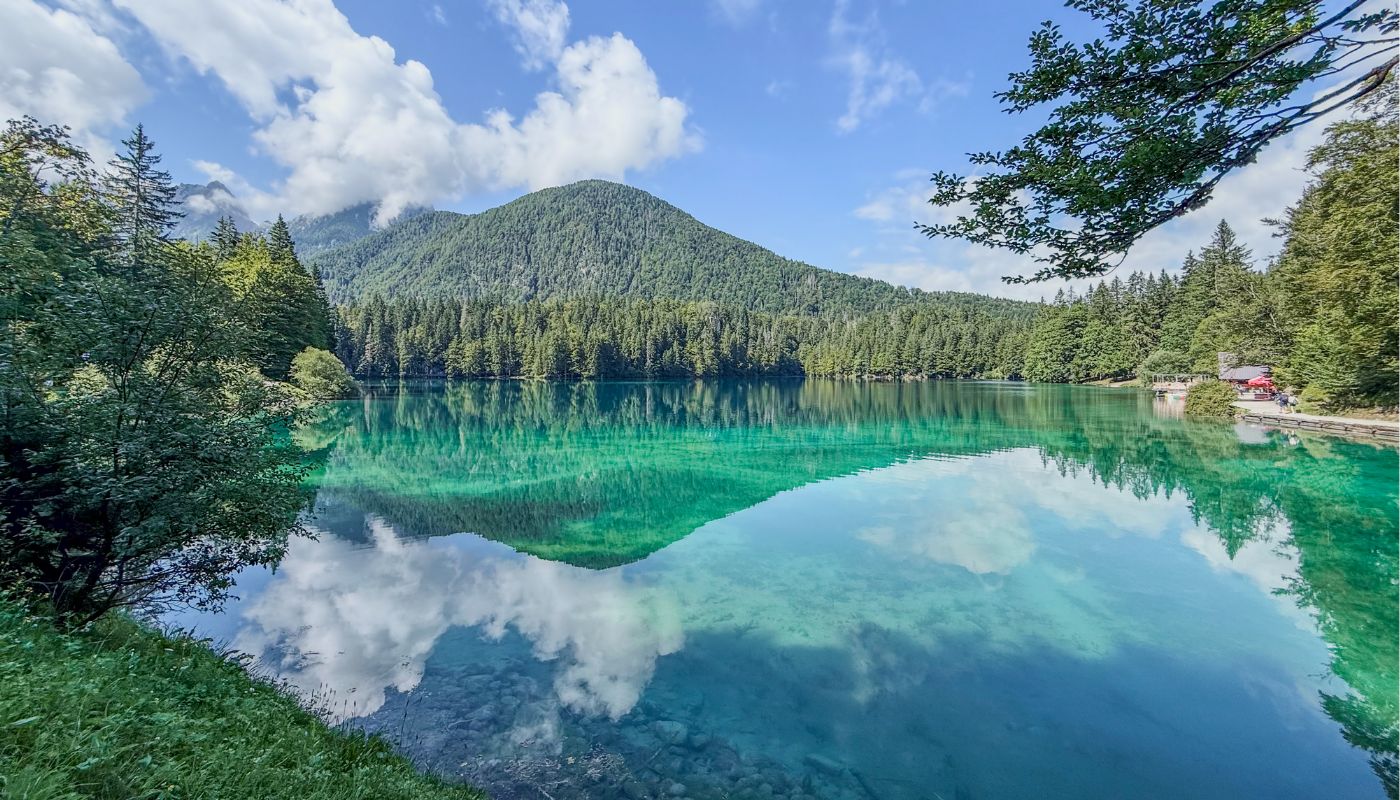
IN THE MOUNTAINS WE ARE ALWAYS GUESTS
by NEVIO COSTANZO
I leave once again by train. It is a Sunday in August and the central station of Gorizia is crowded: among the travelers, several have their bikes with them, like me. The train to Trieste arrives a few minutes late, but I still manage to take the connection in Udine to Tarvisio. The few wagons dedicated to bicycles fill up quickly: with patience and thanks also to the help of the staff, we all find a place. From the window, well-known landscapes flow quickly: the Tagliamento, the Fella valley with its crystal clear waters, the mountains that already announce the Julian Alps. The stops of Gemona, Venzone, Carnia, Pontebba, Ugovizza Valbruna follow one another, and in the carriages, the talks always revolve around bike trips, technical details, routes to discover.
In Tarvisio Boscoverde the rail journey ends. Most cyclists choose to take the Alpe Adria cycle path towards Tarvisio, the best known and busiest in the region. A coffee from the “machine”, – with an anonymous taste, that’s all – and then off we go, in the saddle.
The sky alternates clouds and sun: a day to “dress like an onion”. The cycle path to Rateče, built on the old railway site (part of the Rudolfiana), is one of the most beautiful I know, always suggestive, but I recommend it especially in autumn, when the forest lights up with golden and crisp leaves, creaking under the wheels. Just before the border I deviate, on a cycle path, as it should be, towards the emerald green glacial lakes of Fusina: the road crosses the peat bog of Schichizza, a precious habitat furrowed by streams, whose waters then flow into the Danube catchment area, like the Rio del Lago, an emissary of the lower lake.
Further on, along the carriage road that leads to the lakes of glacial origin, bicycles, pedestrians and cars alternate, until the asphalt gives way to the dirt road of the forest road. Wooden bridges, conifers and deciduous trees, blueberry and raspberry bushes now bare of fruit that tell the passage of the seasons. The regional forest of Fusine offers scents and details that can only be grasped by slowing down.
The road climbs towards the Ghezzi hut and the Zacchi refuge, a destination for many hikers. Instead, I choose the detour to the Malga Alpe del Lago, with its centuries-old pastures, owned by the “Consorzio Pascoli dei Privilegiati Proprietari di Fusine in Valromana”, as one of the many tables states.
The peculiarity of this consortium is that the small valley at the foot of the Mangart was used, since the Middle Ages, as a summer pasture for cattle, horses and sheep. In more recent times, with an imperial license of 1853, the rules for the use, by private individuals and consortia, of the public lands of the Austrian Empire were defined. Subsequently, with a law of 1907 – still in force – a more detailed regulation of the use of these lands was reached.
From here the view of Mangart and Lake Upper opens up. I take a few photos, already knowing that no image can really encapsulate the magic of this place: the silence that envelops us, the subtle sounds of Nature, the life that pulsates hidden among trees and rocks. Then I take the forest road that descends, even steeply, just before Aclete, a small village on the edge of the woods. From there return to the cycle path of the old Rudolfiana railway, continuing to the former Tarvisio Centrale station and then again towards Carnia on the FVG1.
It was a nice experience this (muscular) bike excursion in the regional forest of Fusine. But he also left me with a question.
The bicycle is undoubtedly an ecological means of transport, capable of reducing the environmental impact and promoting an active lifestyle. However, its use in the mountains poses some questions. On narrow paths, in fact, the presence of bicycles can generate conflicts with hikers on foot and increase the risk of accidents, as well as affect the conservation of the tracks. The situation on forest roads, on the other hand, appears different, where larger spaces allow a more serene coexistence between cyclists and walkers, provided that there is mutual attention and respect.
And yet, meeting their gazes and responding to their greetings — Hello, Doberdan, Grüß Gott — I wondered if I was crossing these places with the right vehicle. A stern look reminded me of this better than many words. In the mountains we are always guests: we need respect, attention, the lightness of those who pass almost on tiptoe. Because even if it appears strong, the mountain is fragile, and every step we take — or pedal stroke — still leaves a mark.
